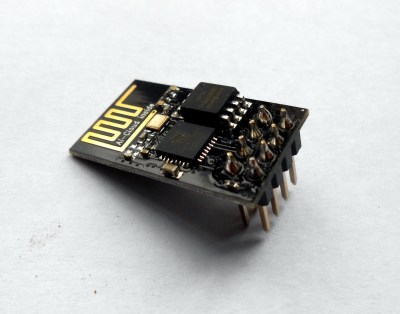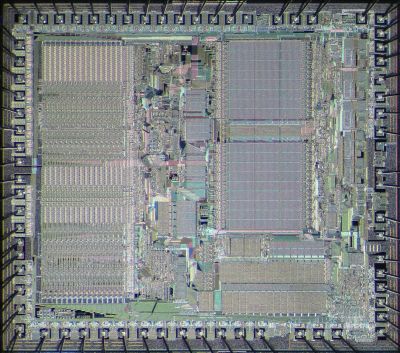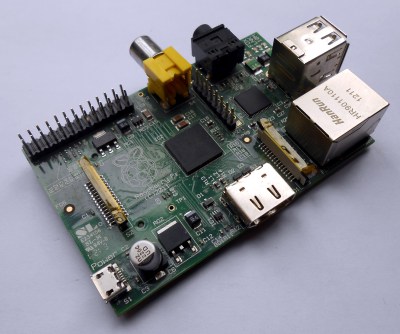Why Blobs Are Important, And Why You Should Care
We are extraordinarily fortunate to live at a time in which hardware with astounding capabilities can be had for only a few dollars. Systems that would once have taken an expensive pile of chips and discretes along with months of development time to assemble are now integrated onto commodity silicon. Whether it is a Linux-capable system-on-chip or a microcontroller, such peripherals as WiFi, GPUs, Bluetooth, or USB stacks now come as part of the chip, just another software library rather than a ton of extra hardware.
Beware The Blob!

If there is a price to be paid for this convenience, it comes in the form of the blob. A piece of pre-compiled binary software that does the hard work of talking to the hardware and which presents a unified API to the software. Whether you’re talking to the ESP32 WiFi through an Arduino library or booting a Raspberry Pi with a Linux distribution, while your code may be available or even maybe open source, the blob it relies upon to work is closed source and proprietary. This presents a challenge not only to Software Libre enthusiasts in search of a truly open source computer, but also to the rest of us because we are left reliant upon the willingness of the hardware manufacturer to update and patch their blobs.
An open-source advocate would say that the solution is easy, the manufacturers should simply make their blobs open-source. And it’s true, were all blobs open-source then the Software Libre crowd would be happy and their open-source nature would ease the generation of those updates and patches. So why don’t manufacturers release their blobs as open-source? In some cases that may well be due to a closed-source mindset of never releasing anything to the world to protect company intellectual property, but to leave it at that is not a full answer. To fully understand why that is the case it’s worth looking at how our multifunctional chips are made.
Chips Aren’t Made Like They Used To Be

Decades ago, a new microcomputer and its range of peripheral chips would have been designed in-house in their entirety by a team of engineers employed by the company. Chips such as Intel’s 8086 or Motorola’s 68000 were produced in this way, and would in many cases even have been put on silicon by in-house chip fabs. Today’s semiconductor industry is much more fragmented, and works in an entirely different fashion. While some large companies might still do the whole job in-house it’s far more likely that they will instead buy in the components of their new products as pieces of IP, as software in the form of VHDL or similar hardware description languages. It’s entirely possible to design a complete SoC in this way without owning any of the IP yourself, and companies such as ARM have made themselves into dominant industry players by selling their cores to chip developers. Such a chip assembled from off-the-shelf IP can then be sent off to a third-party chip fab for production, meaning that a complete product line of chips can be marketed without the direct ownership of either IP or factory.
A chip assembled from multiple pieces of commercial IP will of course be subject to all of the individual licensing agreements for its constituent parts. Individual IP owners will have a multiplicity of reasons for inserting restrictive clauses in their agreements, but at the most basic level they are anxious not to reveal any trade secrets to their competitors in a cut-throat industry. Thus it’s a given that the blob controlling a peripheral on that chip will be bound by a clause in the licensing agreement restricting the dissemination of information relating to its hardware. The blob remains a closed-source precompiled binary, and no amount of railing at the chipmaker about open source will change that. Even chips that contain open-source components such as a RISC-V core are not immune to also containing closed peripheral IP, as for example is the case with the Bouffalo Labs BL602 WiFi SOC.
It’s All In The Updates

So open source advocates have an answer to why blobs exist and why they won’t be going away any time soon, while it might not be to everybody’s taste it is at least a valid one. But the problem with blobs doesn’t stop there, and perhaps our community needs to think a little about it too. Because even if you have no problem with your hardware requiring a blob its presence can still come back to bite you. The reason may have as much to do with the open source world as it does with the IP holder or the manufacturer.
If you own a Raspberry Pi, you may well have updated your copy of Raspbian or Raspberry Pi OS several times with new versions that included major updates to their Linux kernel. The Raspberry Pi’s Broadcom SoC is just like all the other chips in that it comes with a blob, and when they release a new kernel it will be in a firmware package customised for use with that blob and will also come with any appropriate blob updates. The Raspberry Pi folks will have the sources to the closed-source bits but they are prevented from releasing them by their agreement with Broadcom that granted them blob source access. Thus the Raspberry Pi has up-to-date software, but it’s an uneasy mix of an open-source operating system that relies on a closed-source component to work.
Now compare the Raspberry Pi to a lesser-known single-board computer, say a ten-dollar board with a name that follows the {SomeFruit}Pi naming scheme. The Raspberry Pi might have a less exciting spec, but if you examine the operating system that comes with the off-brand board you’ll find that it has a very similar customised kernel that relies on a blob. The difference will come as you continue to use it, over time there may be no new kernels released and after a while you will be using an ancient kernel version with no prospect of an upgrade.
Even if you don’t have a no-name board you’ll recognise the same problem if you have an Android phone. It’s a powerful Linux-capable computer running a customised Linux distro, but after a few years your chance of a new Android version is very slim indeed and you will have next-to-zero chance of installing another Linux distribution on it without tricks involving userland chroot and whatever stale old Android kernel it has installed.
Both these examples have the blob at the root of their problems, in that both come from manufacturers with no interest in releasing new custom kernels for their blobs, so both slowly drift into obsolescence.
What Do You Think Open Source Is For?

In asking what can be done to alleviate this situation it’s worth considering what role open-source software can play. We have established semiconductor industry IP as the root of there being zero chance of manufacturers making their blob code open-source, but how can the world of open source react to that? It comes down to a question of open source philosophy that is probably reflected in licence choice; does open-source exist to make software that works alongside closed source components, or does it exist to extend open-source to all corners of computing and exclude closed source? In the case of Linux it veers toward the latter as the interface to which the blob must talk changes with each version of the kernel, forcing a blob developer to update or let their distribution age into irrelevance. The Raspberry Pi developers put in their effort as a key feature of their products, but this is not a priority for many hardware vendors. If other operating systems such as Microsoft Windows can retain some low-level driver compatibility across their versions, why can’t their open-source alternatives?
There is of course another potential outcome. Semiconductor manufacturers prefer things that cost them less money, and as can be seen with the current slow appearance of RISC-V cores, they are showing signs of becoming willing to dip their toe in the water when it comes to open-source hardware chip components. A quick look at OpenCores or LibreCores will reveal a wealth of parts that can be freely added to designs, so there is at least a possibility of an SoC with no proprietary IP that would need a blob. It will take more than the mere existence of such resources to persuade a manufacturer to take the plunge though, for a fully open-source chip to be a practical proposition there must not only be components for all on-chip functions but they must also be reliable enough for production. Even with the best of intentions, those two things may take a little while to happen.
I hope this article gives some food for thought as to the role of the blob on modern chips and to its relationship with open-source software. It goes beyond a simple argument that manufacturers should just release their blob sources, but if the blob situation can’t be changed should the open source world adapt itself to deal with that? As always, we’d like to hear your views in the comments.
Post a Comment